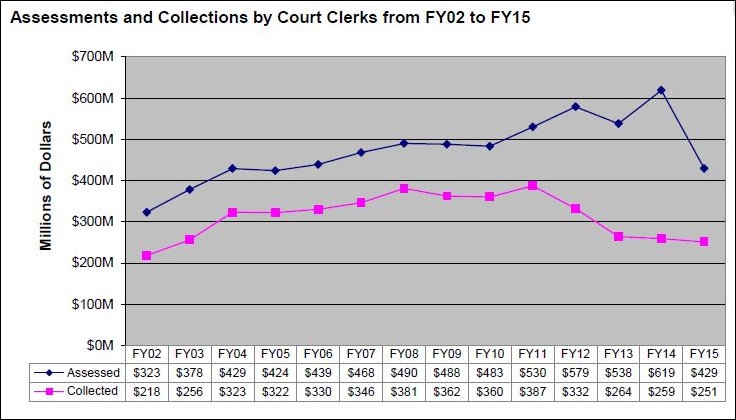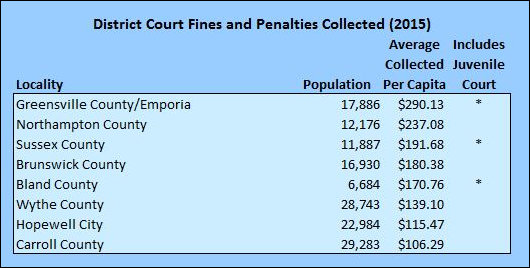by James A. Bacon
The Legal Aid Justice Center contends that Virginia courts are perpetuating a cycle of poverty by fining people, charging them court costs, and suspending their driver’s licenses. When people lose their licenses, they find it harder to get to work. Many lose their jobs, making it impossible to pay the fines. Unpaid penalties accumulate, which prompts more sanctions by the courts. That pitiable hard-luck cases do occur is undeniable. The question is how widespread the problem is. Are stories like those enumerated in the Justice Center’s class action lawsuit anecdotal, or is the problem systemic?
We know the problem is widespread enough that Richmonder O. Randolph Rollins felt moved to form Drive to Work, a not-for-profit organization dedicated to help poor and working class citizens work their way out of the court debt-suspended license trap. According to a story I posted last year, the group had more than 600 clients.
Another way to get a handle on the scope of the vicious cycle is to peruse the 2015 Fines and Fees Report, which tallies assessments and collections by court clerks and commonwealth attorneys in Virginia. Last year, court clerks assessed $429 million and collected $251 million in fines and fees. (The report also notes that commonwealth attorneys, who take on delinquent assessments forwarded to them by the courts, collected another $29 million.)
For whatever reason, assessments have been heading steadily higher since 2013 — until last year, when they dropped sharply. Collections also headed higher through 2011, and then began declining. The report offers no explanation for the fall-off in assessments and collections.
Complicating the picture is the fact that practices differ from locality to locality, which means that the impact on local populations vary as well.
To get a sense of that variance, I tallied net collections by general district courts for Fiscal Year 2015. I focused on general district courts because they account for 62% of all assessments and 75% of all court collections, way more than the circuit courts and juvenile and domestic relations courts (although sometimes the numbers for general district and juvenile/domestic courts are combined for reporting purposes, as noted by asterisk in the table below). It’s no surprise that jurisdictions with large populations see higher levels of fines and fees. To adjust for population size, I calculated fines and fees per capita, using 2015 population estimates.
The variation between localities is striking. In Craig County, collections of fines and fees averaged a mere $11.27 per capita, the lowest rate in the state last year. By contrast, Greensville County/Emporia logged an extraordinary $290 in fines and fees per resident. The mean level (half of localities above, half below) of collections was about $25 per capita.
There may be legitimate reasons for the wide variation. Perhaps the population of some localities is more prone than others to petty crime, traffic offenses, chaotic family lives and/or contempt toward the courts, characteristics that judges tend to punish with fines. But it’s also possible that some court systems view the assessment of fines and fees as a revenue-raising tool, engaging in practices that could be construed as preying upon the poor. I would conjecture that this might be the case among the eight localities where fees-and-fine collections exceed $100 per capita. While this analysis is too quick-and-dirty to prove the point, it does suggest the need for closer investigation.
To view the average fee-and-fine collections for all Virginia localities, click here.
For what it’s worth, the list of top fine collectors is dominated by rural counties, mostly in Southside and Southwestern Virginia. Is it pure coincidence that Greensville County and Emporia are located on Interstate 95? Are local courts and law enforcement targeting out-of-staters for traffic enforcement? Or are they coming down hard on the local population?
The General Assembly’s primary concern is improving the efficiency of collections, as witnessed by studies on the subject and the annual report on fines and fees. As I have noted elsewhere, courts need the ability to impose fines and penalties as a sanction for certain kinds of offenses. Likewise, it is reasonable to ask guilty parties to pay court costs. But courts must be impartial and even-handed administrators of justice, not revenue-raising arms of the state.




